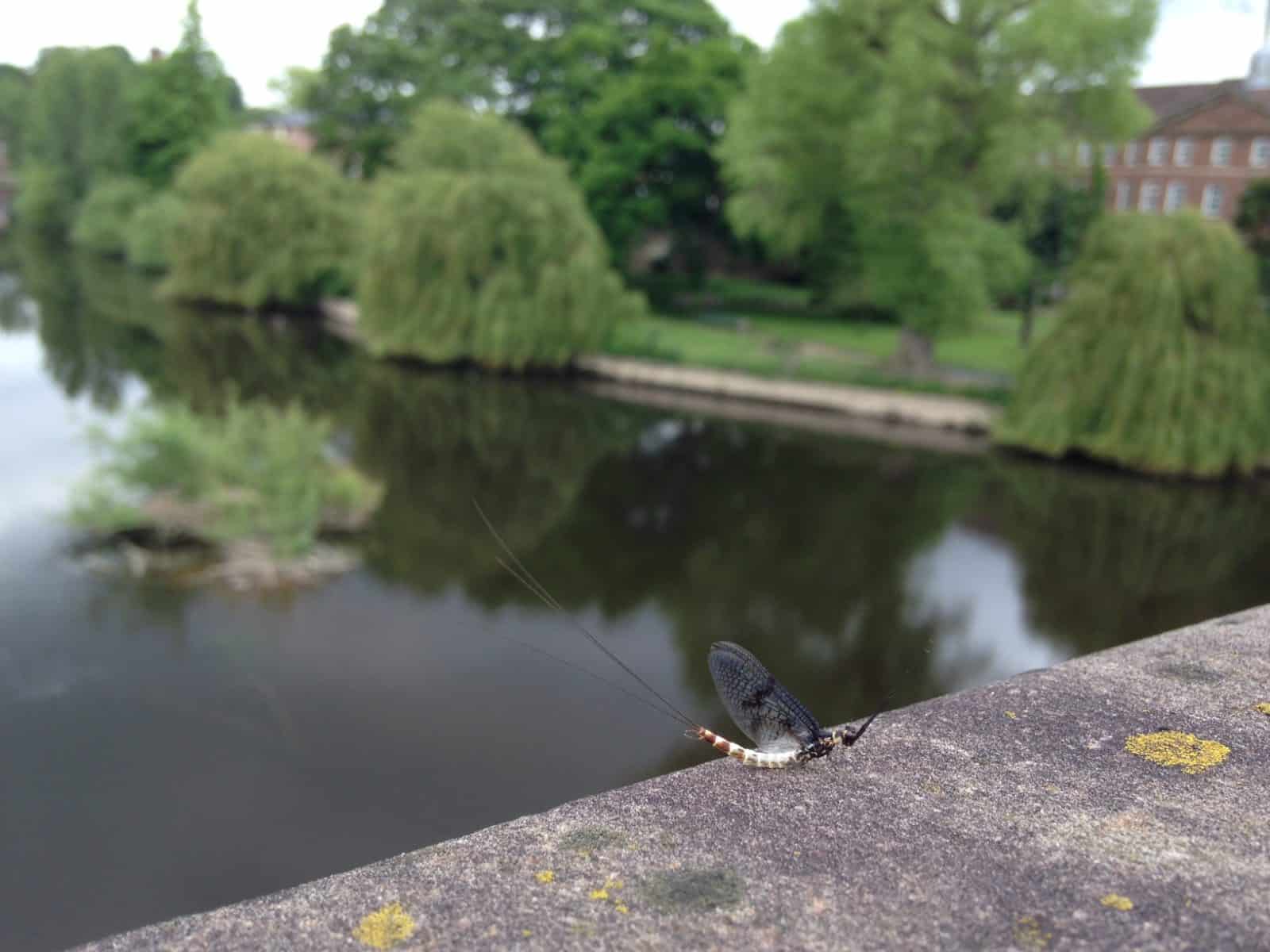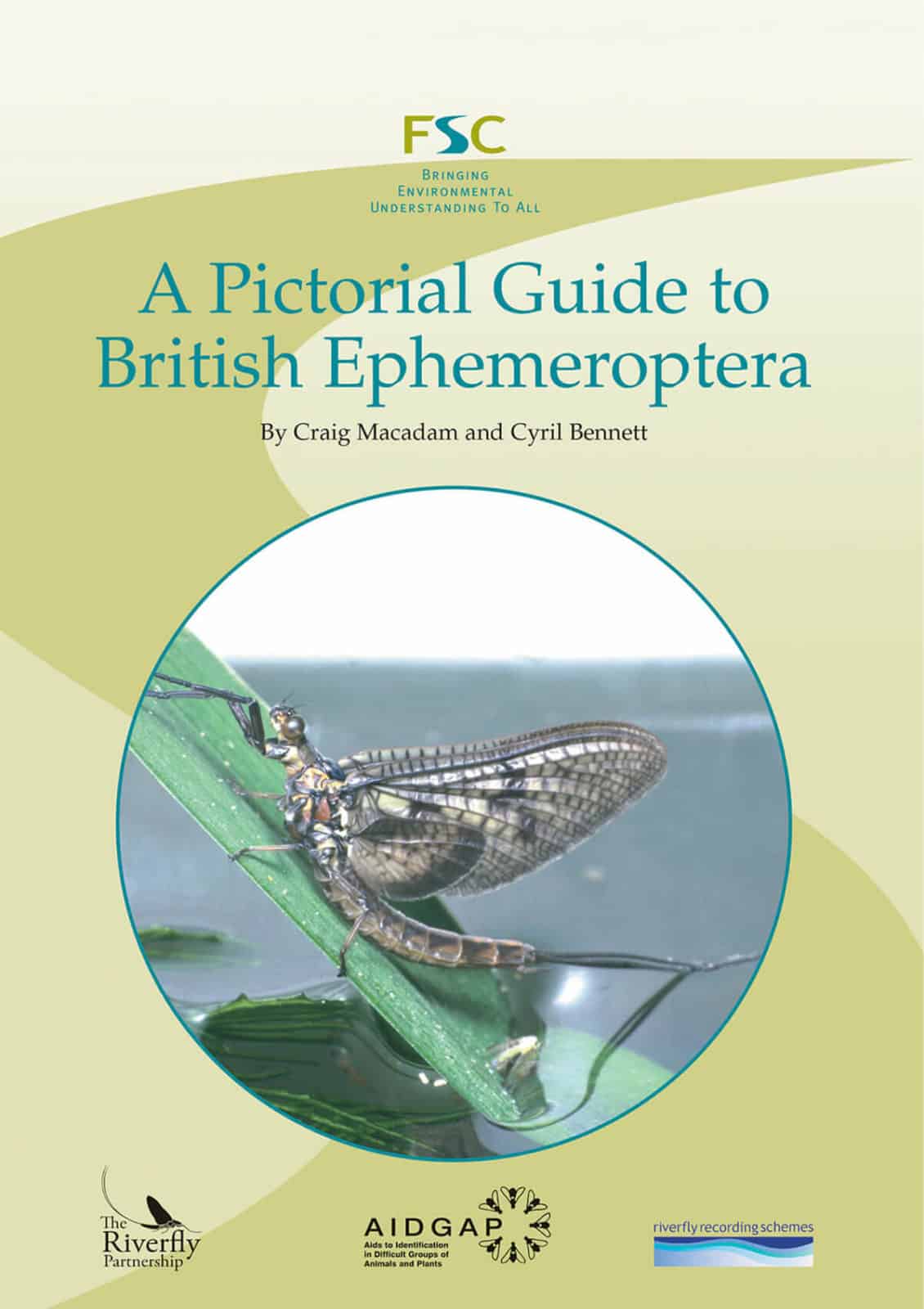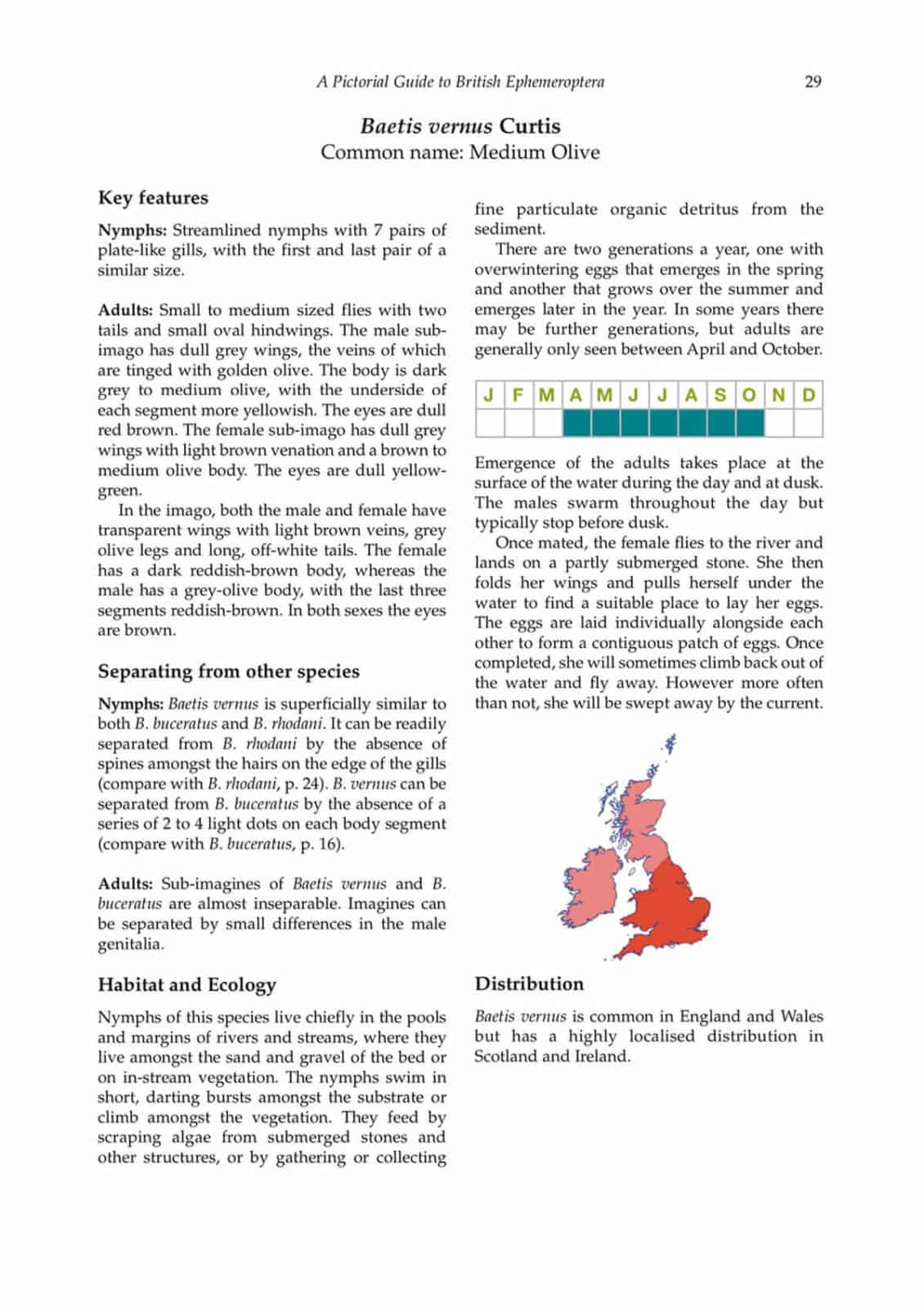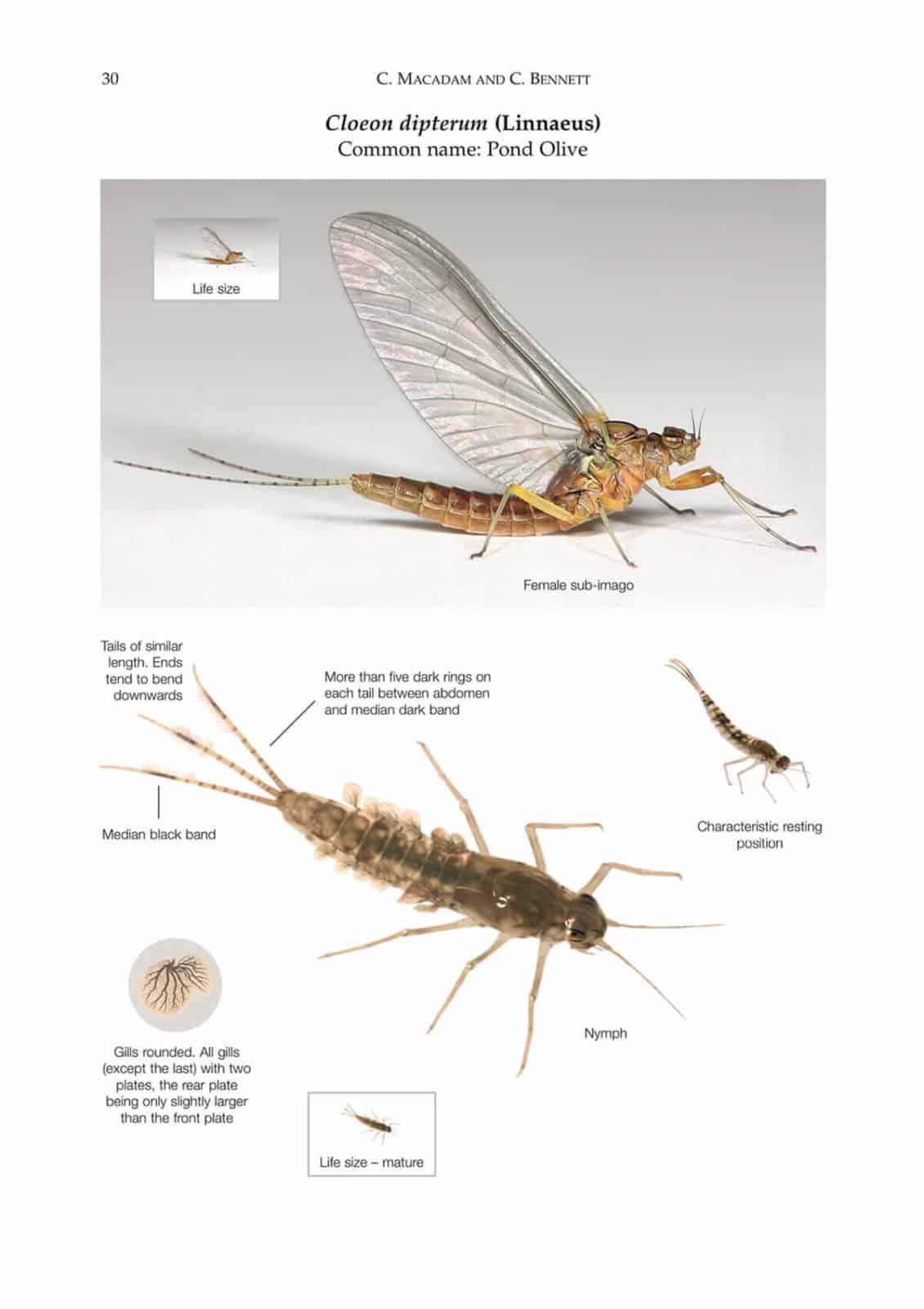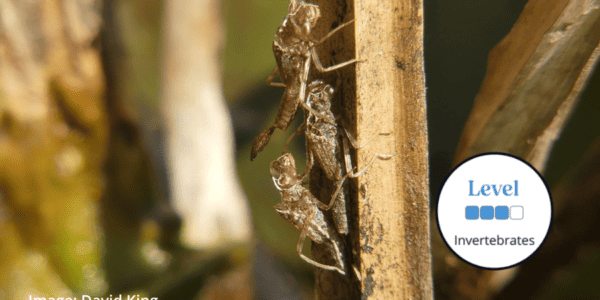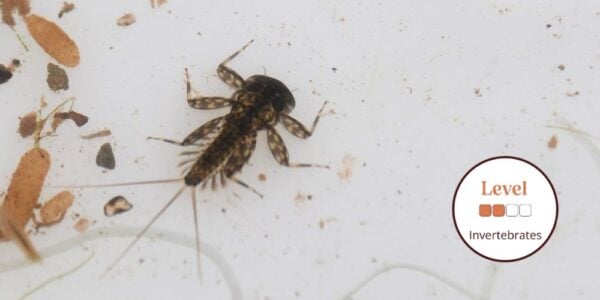Mayflies AIDGAP
Mayflies AIDGAP is a pictorial guide to British Ephemeroptera.
It features identification keys to the adults and nymphs of all 51 species of mayflies in Britain and Ireland. First there are two photographic keys: one to adults and one to nymphs. These take identification to family level, leading to further photographic keys to individual species. Individual species accounts follow, including distribution maps, habitat requirements, conservation status and diagnostic characters. Using this guide, you should be able to identify most species from live specimens in the field.
Mayflies can be seen emerging from the water, resting on nearby vegetation and most commonly ‘dancing’ above head height, along the shores of many still waters and rivers. Of course the word ‘mayfly’ is slightly misleading, as this group of flies can appear throughout the year. However one common species, Ephemera danica, emerges as adults when the mayflower (hawthorn) is in bloom. Overall there are around 3000 species worldwide, with 51 in Britain and Ireland.
Mayflies have a fascinating life cycle. Unlike any other insects, there are two adult stages: the sub-imago and imago, or dun and spinner. Adult males form a swarm, which females fly into to mate. After mating the female descends to the water surface to lay her eggs. These eggs fall to the bottom of the water where they stick to plants and stones. However females in some species of Baetidae crawl under the water to lay eggs directly onto stones. Spent and motionless, the female lies with wings flat on the surface, often becoming prey to fish. The male either rejoins the swarm or flies to nearby vegetation and dies.
Mayflies AIDGAP was co-created with The Riverflies Partnership.

